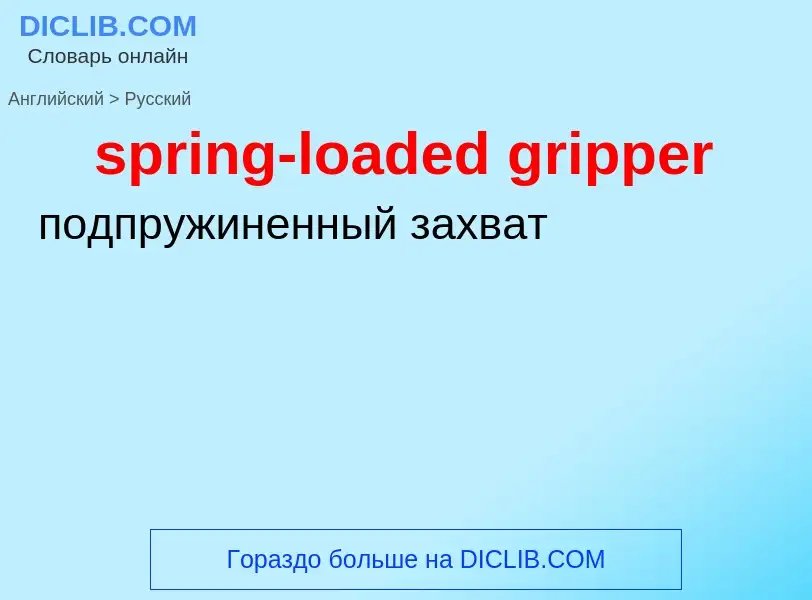Перевод и анализ слов искусственным интеллектом ChatGPT
На этой странице Вы можете получить подробный анализ слова или словосочетания, произведенный с помощью лучшей на сегодняшний день технологии искусственного интеллекта:
- как употребляется слово
- частота употребления
- используется оно чаще в устной или письменной речи
- варианты перевода слова
- примеры употребления (несколько фраз с переводом)
- этимология
spring-loaded gripper - перевод на русский
общая лексика
пружина растяжения
нефтегазовая промышленность
усилие пружины
Определение
Википедия

A spring is a device consisting of an elastic but largely rigid material (typically metal) bent or molded into a form (especially a coil) that can return into shape after being compressed or extended. Springs can store energy when compressed. In everyday use the term often refers to coil springs, but there are many different spring designs. Modern springs are typically manufactured from spring steel. An example of a non-metallic spring is the bow, made traditionally of flexible yew wood, which when drawn stores energy to propel an arrow.
When a conventional spring, without stiffness variability features, is compressed or stretched from its resting position, it exerts an opposing force approximately proportional to its change in length (this approximation breaks down for larger deflections). The rate or spring constant of a spring is the change in the force it exerts, divided by the change in deflection of the spring. That is, it is the gradient of the force versus deflection curve. An extension or compression spring's rate is expressed in units of force divided by distance, for example or N/m or lbf/in. A torsion spring is a spring that works by twisting; when it is twisted about its axis by an angle, it produces a torque proportional to the angle. A torsion spring's rate is in units of torque divided by angle, such as N·m/rad or ft·lbf/degree. The inverse of spring rate is compliance, that is: if a spring has a rate of 10 N/mm, it has a compliance of 0.1 mm/N. The stiffness (or rate) of springs in parallel is additive, as is the compliance of springs in series.
Springs are made from a variety of elastic materials, the most common being spring steel. Small springs can be wound from pre-hardened stock, while larger ones are made from annealed steel and hardened after manufacture. Some non-ferrous metals are also used, including phosphor bronze and titanium for parts requiring corrosion resistance, and low-resistance beryllium copper for springs carrying electrical current.


![order=flip}} [[draw weight]], with each limb functionally a cantilever spring. order=flip}} [[draw weight]], with each limb functionally a cantilever spring.](https://commons.wikimedia.org/wiki/Special:FilePath/Englishlongbow.jpg?width=200)


![Military [[booby trap]] firing device from USSR (normally connected to a [[tripwire]]) showing spring-loaded [[firing pin]] Military [[booby trap]] firing device from USSR (normally connected to a [[tripwire]]) showing spring-loaded [[firing pin]]](https://commons.wikimedia.org/wiki/Special:FilePath/Russian - MUV pull fuze.jpg?width=200)
